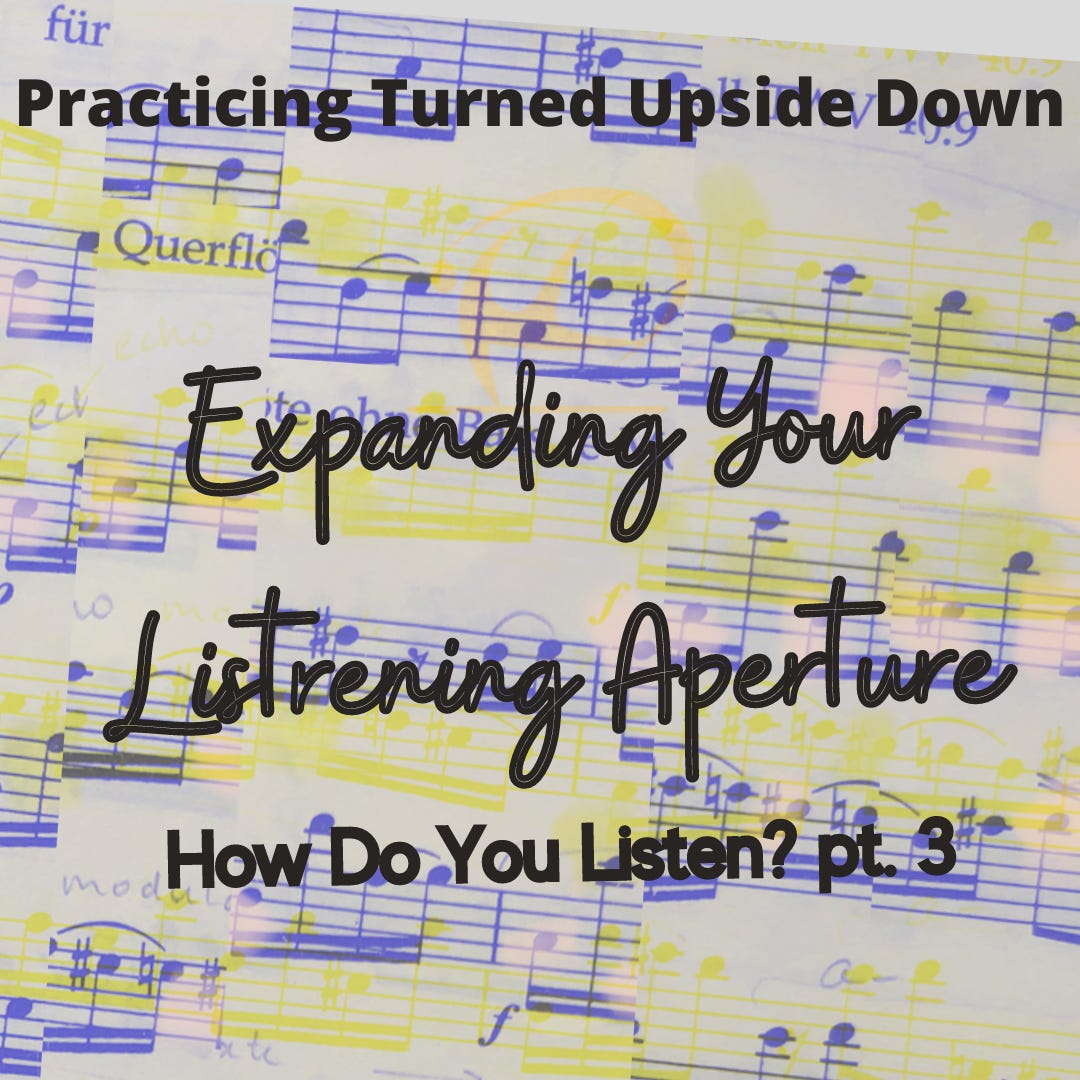We have taken baby steps to get to expand the aperture of how you listen. This post is another baby step to listening in a new different way.
I can remember listening to my students play their pieces and being overwhelmed by the notes, rhythms, and nuance I heard. I would literally get lost and not know what to say. There are so many layers to creating beautiful phrases.
We can constantly get stuck in micro listening: notes, pitch, dynamic changes, but we can use a macro listening approach to hear the long line, a framework of sort to fill with the complexity of rhythmic and pitch subdivisions. When I listen in this way I can guide students to create stunning phrases and engaging performances for their listeners instead of getting stuck in the weeds of critique.
Here we go…
Find the simple line in your music. I have never encountered a piece of music that does not have an underlying simple line. If you feel like your piece doesn’t reveal a simple line, go back to something where you can uncover the simple line.
In the Telemann Fantasia in e minor, I am working on, I see combinations of quarter note lines with intermittent eighth note passages amidst the continuous groups of sixteenth notes. Playing this simple line, allows me to hear the direction of the harmony which in turn reveals the shape of the phrase. I can use this information to map out how to move to the peak and release from it.
As you prepare to approach your music, start by hearing the soundscape around you. You are going to add the beautiful simple line of your piece to your soundscape. Instead of having expectations, listen and hear what the music reveals. Perhaps there is an even simpler line you can parse out. Listen to how one note leads to the next.
Experiment with how opening up your hearing, allows the notes of the simple line to guide phrasing. If you get caught listening in the weeds, sound/pitch, or even distracted by other things, pause. Reset your macro listening and continue.
I describe this process as listening from 30k feet, rather than listening to what is immediately coming out of the instrument.
This week add the simple line of your piece to your soundscape. Approach the music with naive curiosity, see what it has to offer, what it has to tell you. You might be surprised




